Cubano Sandwiches: Roast Pork Shoulder with Latin Flair
Cubano sandwiches are an integral part of the cuisine and culinary tradition of Florida. And they are one of the great sandwiches to come out of America’s proud sandwich-creating history. Though there is some regional variation in style, one thing that all Cubanoss have in common is thinly-sliced marinated roast pork. And it should be pork shoulder, not pork loin.
Pork shoulder can be cooked low and slow for BBQ sandwiches, carnitas, or chili. But for Cubanos, we change the cooking and doneness temperatures to yield juicy pork that still holds together when sliced. Keep reading to get the temperature and flavor tips you need to recreate this storied taste of the Sunshine State.
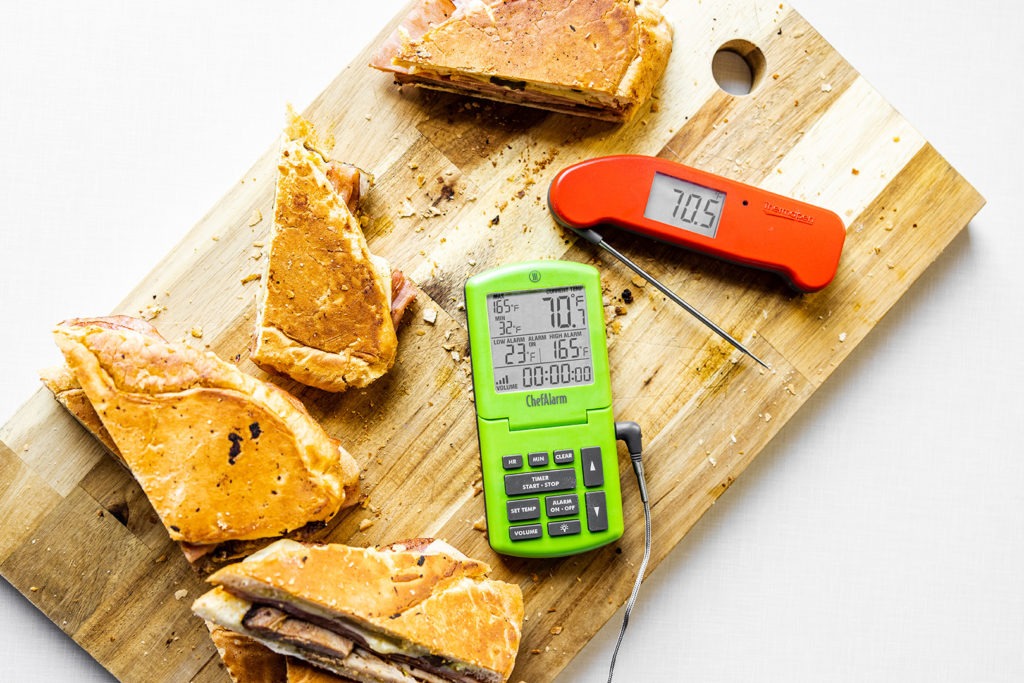
What makes a Cuban sandwich a Cuban sandwich?
All Cuban sandwiches have some things in common:
- Slices of roasted pork shoulder marinated in mojo
- Thin slices of ham
- Swiss cheese
- Thinly sliced sandwich pickles
- Mustard
- Cuban bread (soft French bread is an acceptable substitute)
It is most likely that Cubanos were created in Florida by Cuban immigrants, and the sandwich still bears marks of that immigrant heritage. One mark, in particular, is the mojo marinated pork and the simple Cuban bread. There are two major styles that people debate about: Miami style and Tampa style. Both have sliced roasted pork, both have ham, swiss cheese, and pickles. The styles diverge in that the Tampa-style Cubano also had Genoa-style salami on it. This addition is likely due to the large Italian immigrant community in Tampa that lived alongside the Cuban immigrants.
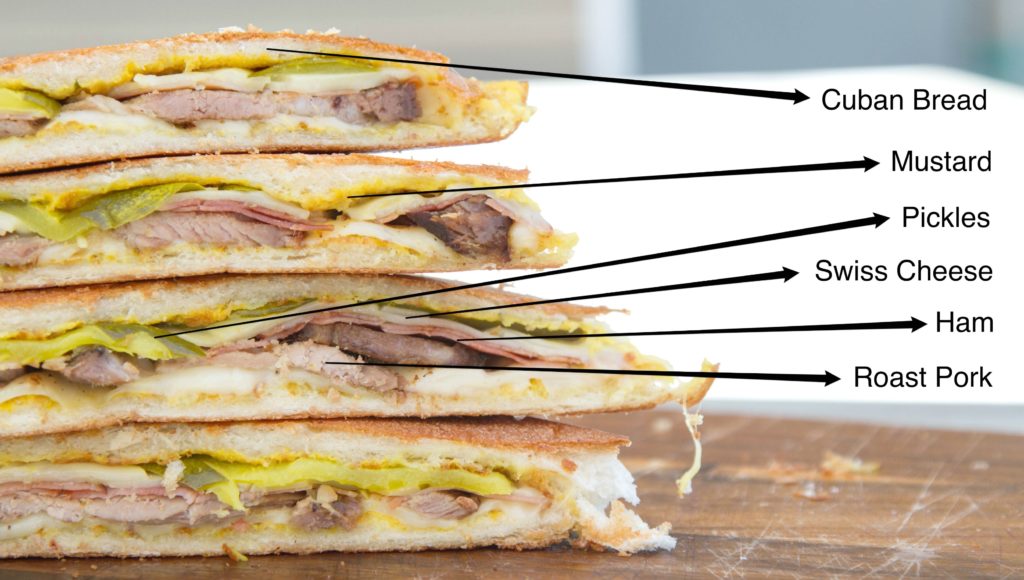
Outside of Tampa and Miami, Florida, it can be difficult to find good examples of these sandwiches—so you’ll need to make your own. It’s not hard, but it does take some time to marinate the pork. In this post, we will be making the Miami version of the sandwich. We’ll be following the guidance of Andrew Rea of Binging With Babish. If you want to make it Tampa-style, just add some good Genoa salami to your sandwich!
What is Mojo?
The pork shoulder for Cubanos should be given a flavor bath in Mojo marinade before roasting, but what is mojo? Mojo (pronounced MO-ho) is an intensely flavored sauce made with citrus juice, olive oil, cumin, fresh herbs, and fresh garlic. It can be used as a marinade, dip, or for basting.
Traditionally, mojo is made with fresh sour orange juice but that can be hard to find. Use orange juice mixed with lime juice as an acceptable substitute. The powerful flavor of the mojo is an important component in the overall success of the sandwich. To get more flavor into the meat, we like to score the shole surface of the pork shoulder before marinating. Also, don’t rush the marinating time—your patience will pay off.
While you can mince a whole head of garlic by hand and spend a long time zesting all those oranges and limes, I like to make the process easier. Put the peeled garlic cloves, the herbs—roughly chopped— and peeled strips of the citrus zest into a food processor and whizz them all up, then mix them with the citrus juices to complete the marinade.
Higher Temperature Roasted Pork Shoulder for Cubanos vs Low and Slow Pulled Pork
Cooking and Doneness Temperatures for the Right Texture
Many cooking methods for pork shoulder use a low cooking temperature with a final doneness temperature of 190-205°F (88-96°C) (see our post, Smoked Pulled Pork: Delicious Results in Almost Half the Time). The long cooking process of BBQ and other “low and slow” methods gives time for the normally tough meat fibers of pork shoulder to become more tender and for the collagen-rich connective tissue in pork shoulder to dissolve into silky gelatin.
But for Cubano sandwiches, we need a pork shoulder that is tender without being fall-apart tender. We need to be able to slice the pork shoulder (you could never slice pulled pork) and yet still have juicy succulent pork when we bite in. This calls for a higher cooking temperature of 300°F (149°C) to speed up the process, keeping the muscle fibers more firm. We’ll use a pull temperature of 165°F (74°C) followed by a quick high-heat (500°F [260°C]) sear to crisp the exterior.
At this doneness temperature, fat still renders and connective tissue still dissolves, just not to the same degree as in BBQ pulled pork. Your sliced pork will be juicy and tender enough to bite through easily but will hold together nicely in this layered sandwich. It’s perfect for slicing.
A note on pork tenderness:
To increase the tenderness and flavor quotient of this pork, we not only use that über-flavorful mojo, but we start first with a brine made with orange juice, more garlic, vinegar, and spiced rum. As with all brining, this moves the meat toward tenderness by allowing the salt and, in this case, acid to start working on the protein fibers before we even cook. It does push this to a 2–3 day cook, but it is well worth the effort and extra time.
Cubanos are a gloriously simple sandwich, but the interplay between such simple ingredients produces a result that is far greater than its parts. Of course, that’s par for the course with sandwiches, isn’t it? A few simple ingredients, prepared the right way, and you get culinary alchemy. One of the keys to making this sandwich so great is the roasted pork. Starting the pork in a brine and marinade with bright, colorful flavors, then cooking it to just the right temperature makes for the best tasting sandwich you’ve had in (probably) a long time. Give this a try, with or without salami, and enjoy something tasty with those you care about. Happy cooking!
Print
Cubano Sandwich Recipe
Description
Cubano sandwiches with mojo-marinated roasted pork shoulder. Adapted from Binging with Babish.
Ingredients
For the roast pork:
- 1 pork shoulder (we used bone-in, but a tied-up boneless shoulder—or even a butterflied one—would be better for carving later on)
Brine
- 4 C orange juice
- 2 C water
- 1/2 C rice wine vinegar
- 1/2 C spiced rum
- 1/4 C brown sugar
- 2 stems each coarsely chopped fresh sage, rosemary, thyme, and oregano
- 1/2 C salt
- 1 head of garlic, separated into cloves
- 3 bay leaves
Mojo Marinade
- 1/2 C olive oil
- Zest and juice from 3 oranges (strip the zest from the fruit with a veggie peeler)
- Zest and juice from 6 limes (strip the zest from the fruit with a veggie peeler)
- 2 Tbsp rough-chopped fresh oregano
- 1/2 C rough-chopped fresh cilantro
- 1/4 C rough-chopped fresh mint
- 1 head of garlic, peeled
- 2 tsp salt
- 1/2 tsp black pepper
- 2 Tbsp ground cumin
For the sandwiches:
- Cuban loaves of bread
- You can find Cuban loaves at Latin markets, or substitute with soft loaves of French bread or bolillo rolls
- Yellow or dijon mustard
- Thinly sliced ham
- Sliced Swiss cheese
- Thinly sliced sandwich pickles
- Butter
Instructions
Brine the pork
- Score the pork lightly all over with a sharp knife, especially on the fat cap.
- In a food processor, place the garlic, sugar, salt, and herbs. Pulse until well chopped. (You don’t really need to peel the garlic for this step if you don’t want to.)
- Mix together all brine ingredients, stirring until well combined.
- Pour the brine over the pork and cover with a lid or plastic wrap.
- Refrigerate for 12-24 hours.
Marinate the pork
- Combine the strips of citrus zest, the garlic (peeled this time), salt, and the herbs in the bowl of a food processor. Run the processor until the garlic is well minced and the citrus zest strips are cut small.
- Combine the herb/garlic/zest mix and all remaining marinade ingredients and stir well.
- Remove pork shoulder from the brine and pat dry.
- Place the pork in the marinade and massage the marinade into the surface of the pork. Pile some of the herby bits of the marinade up on top of the pork if it is hot fully submerged.
- Marinate for 3 to 24 hours in the refrigerator.
Roast the pork
- Preheat your oven to 300°F (149°C).
- Remove the pork shoulder from the marinade and place it on a wire rack set over a foil-lined baking sheet.
- Baste the pork shoulder with some of the excess marinade.
- Place ChefAlarm probe into the thickest part of the center of the meat (avoid bone if using a bone-in shoulder).
- Set your ChefAlarm’s high-temp alarm to 165°F (74°C).
- Place the roast in the oven and cook until your ChefAlarm’s high alarm sounds.
- Once the high alarm sounds, plunge the probe of your Thermapen® ONE into the pork shoulder and pull it back through the center, watching for the lowest reading, to be sure that the lowest temperature in the pork is 165°F (74°C).
- Remove the pork shoulder from the oven and increase the oven’s temperature to 500°F (260°C).
- Once the oven is preheated, place the pork shoulder back into the oven to form a crisp, brown crust—about 10 minutes.
- Remove the pork from the oven once the crust has developed to your preference, and let it rest, uncovered, for 20-30 minutes.
- Once cool enough to handle, slice the pork into 1/4″ thick slices against the grain.
Make the sandwiches
- If you have a panini press, heat it up to 350°F (177°C). If you have a flattop, heat it; if you have a cast-iron pan, start heating it over medium heat.
- Cut the loaves of bread in half along their long axis.
- Melt butter and brush it onto the surface cut surfaces of the bread. Place the cut sides face-down on your hot surface and toast them.
- Cook the ham and the sliced pork on the hot pan until browned and hot.
- Coat each piece of bread with mustard. Don’t use too much, but make sure you have good coverage.
- Arrange a layer of pork on the bottom piece of bread. Top it with ham, a couple slices of Swiss cheese, and the pickles.
- Top with the other half of the bread. Brush both sides with melted butter and put it in the press/on the pan. Cook.
- If using a flattop or a pan, press down on the sandwich with a heavy pan or pot to flatten it.
- Cook until the cheese is melted and the insides are hot and the outsides are golden and crisp.
- Slice on the diagonal and serve!
Shop now for products used in this post:
Resources:


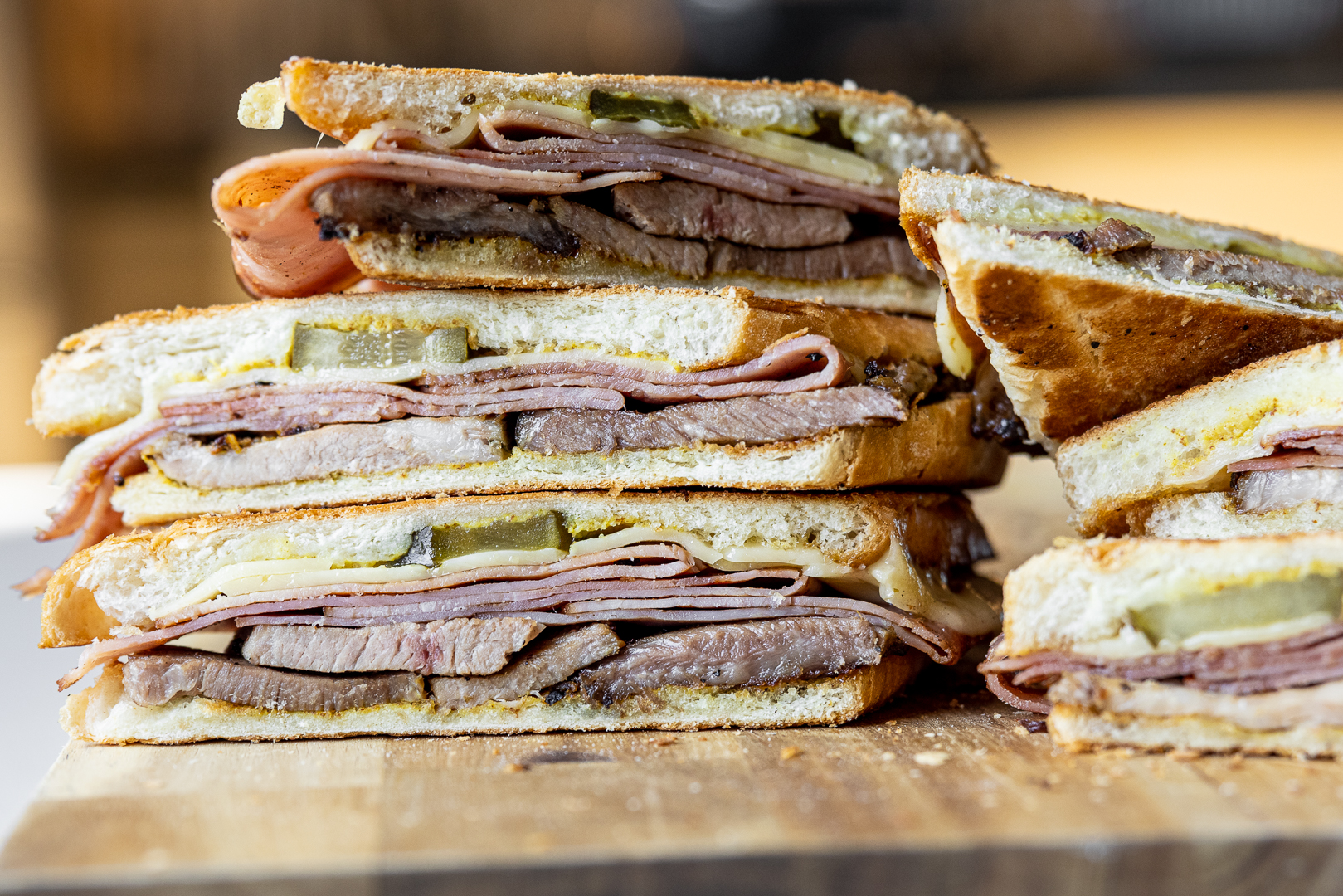
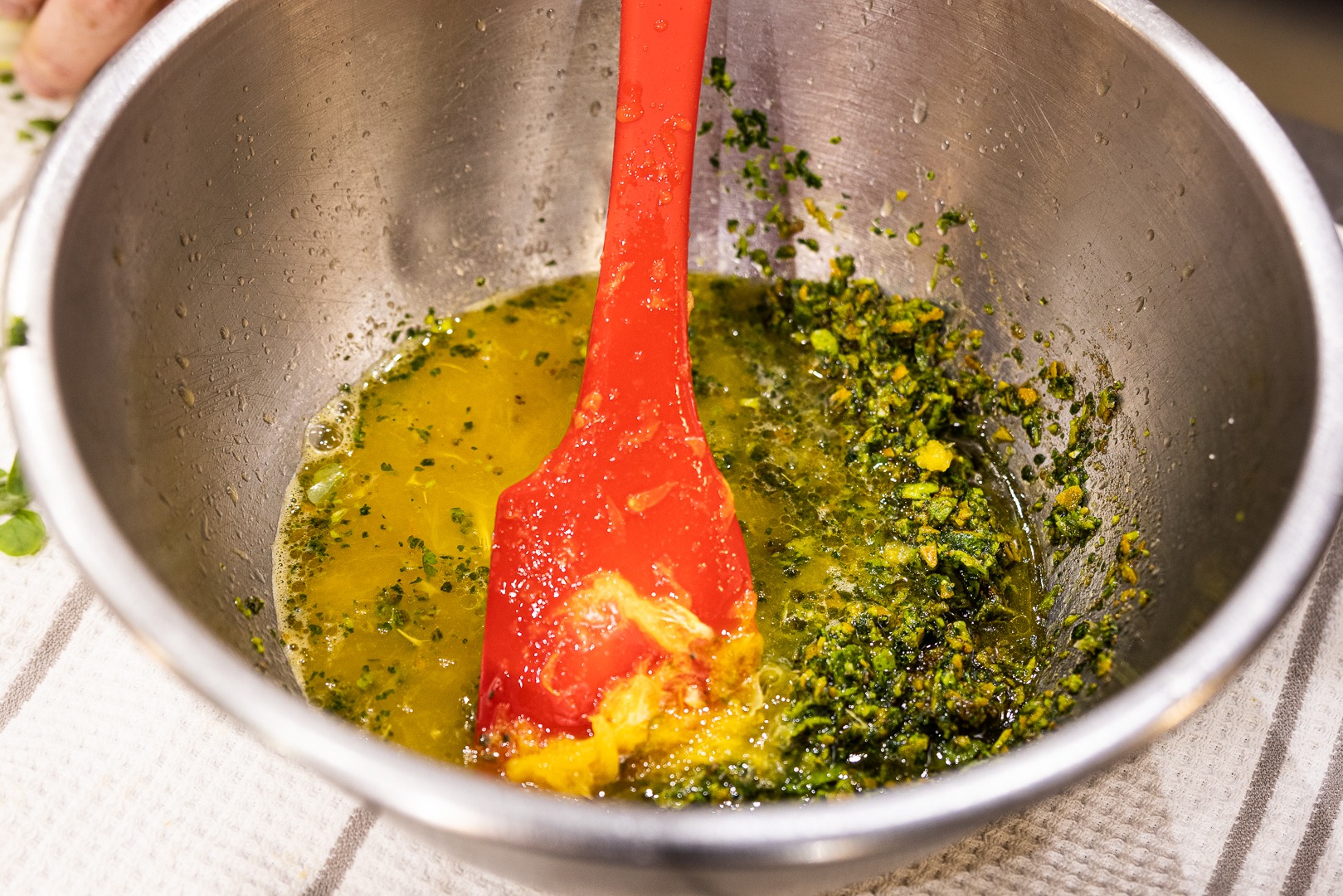
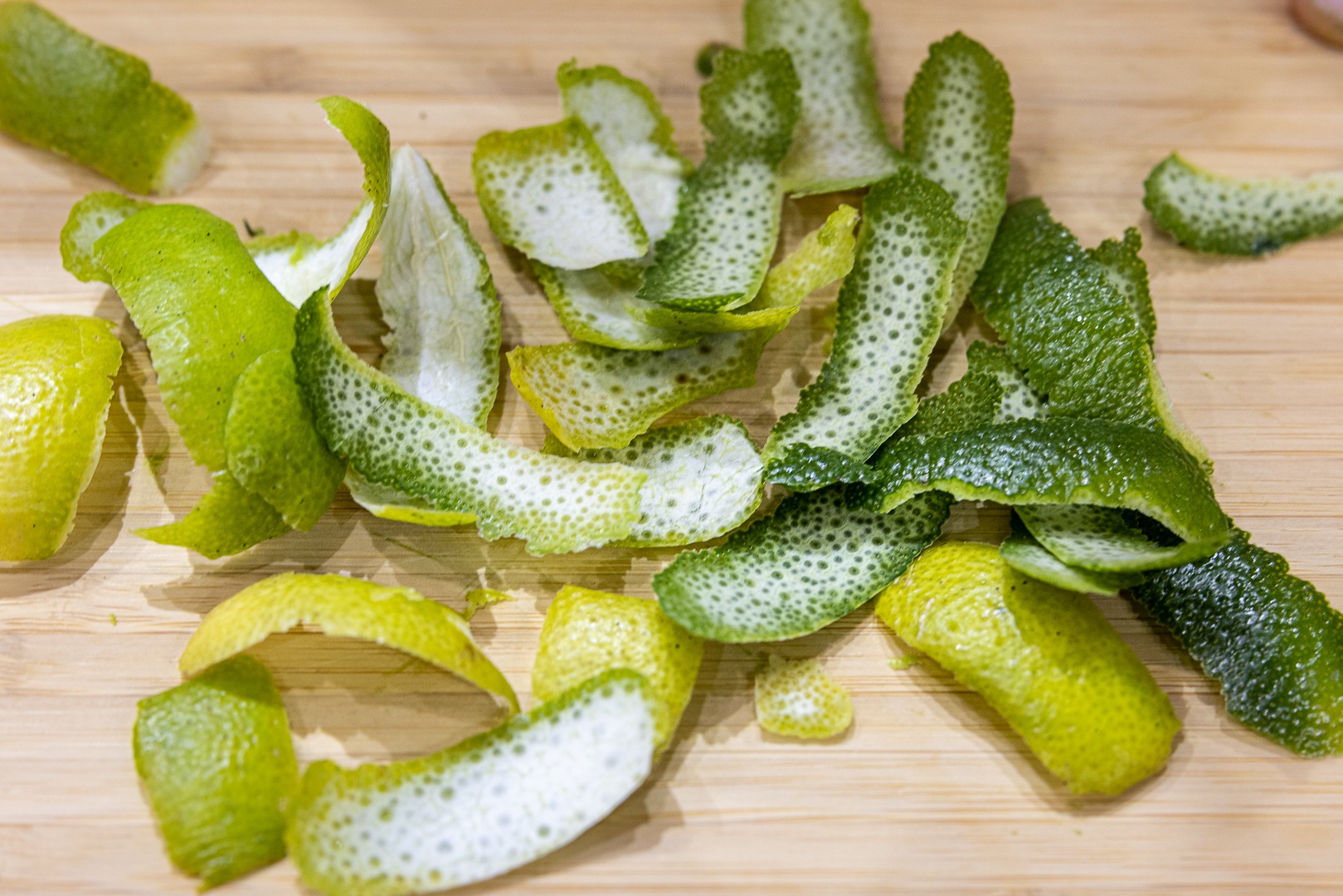
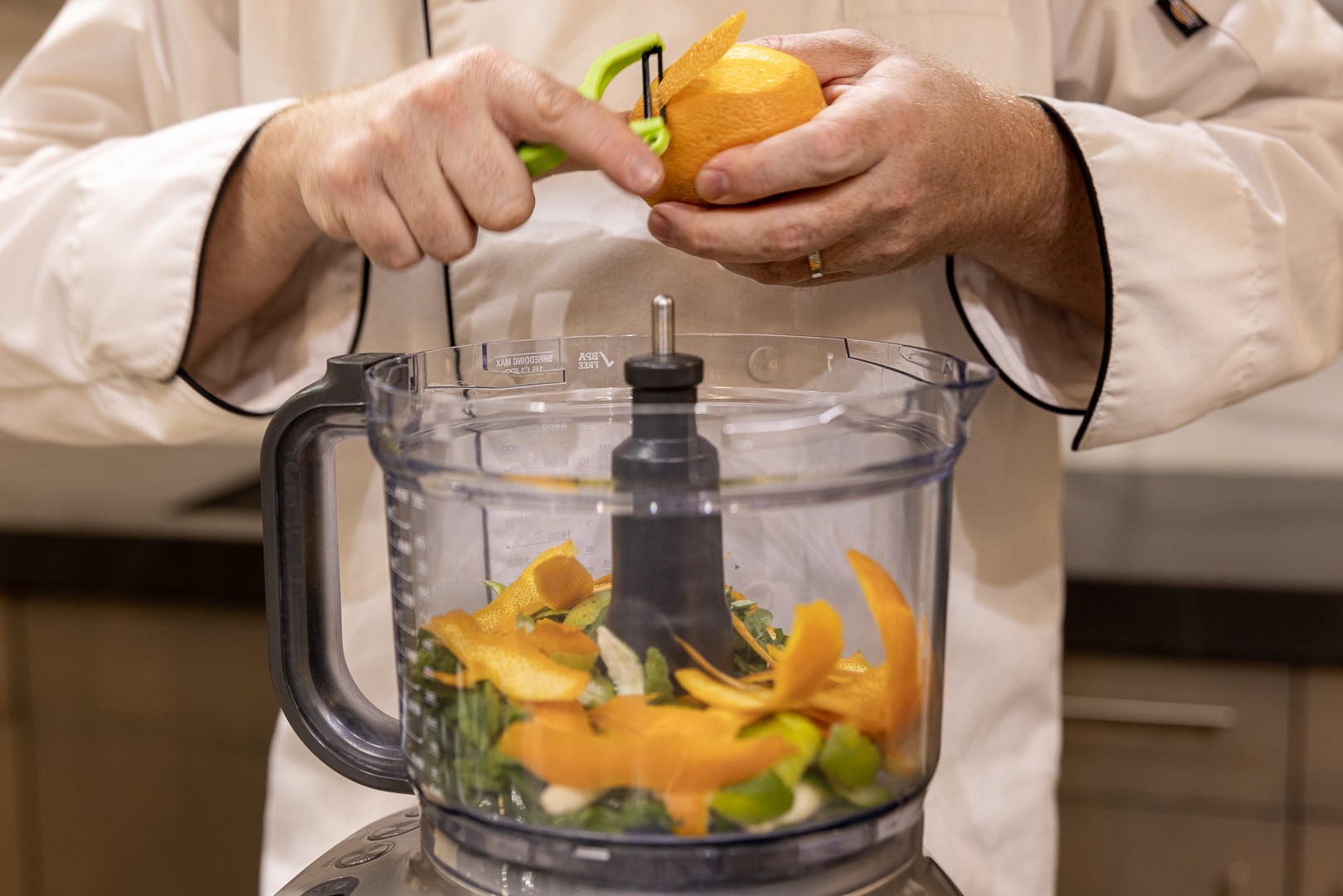
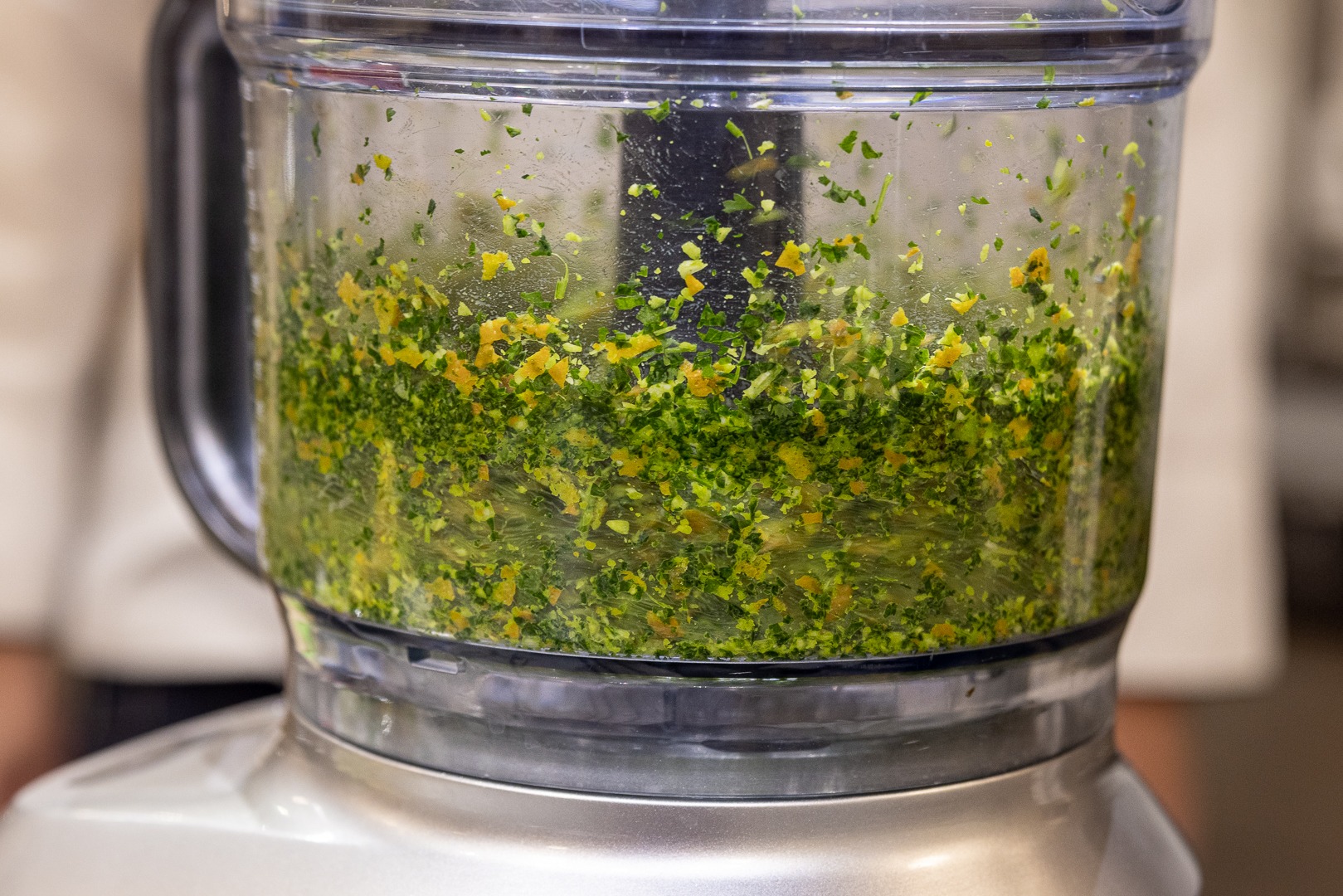
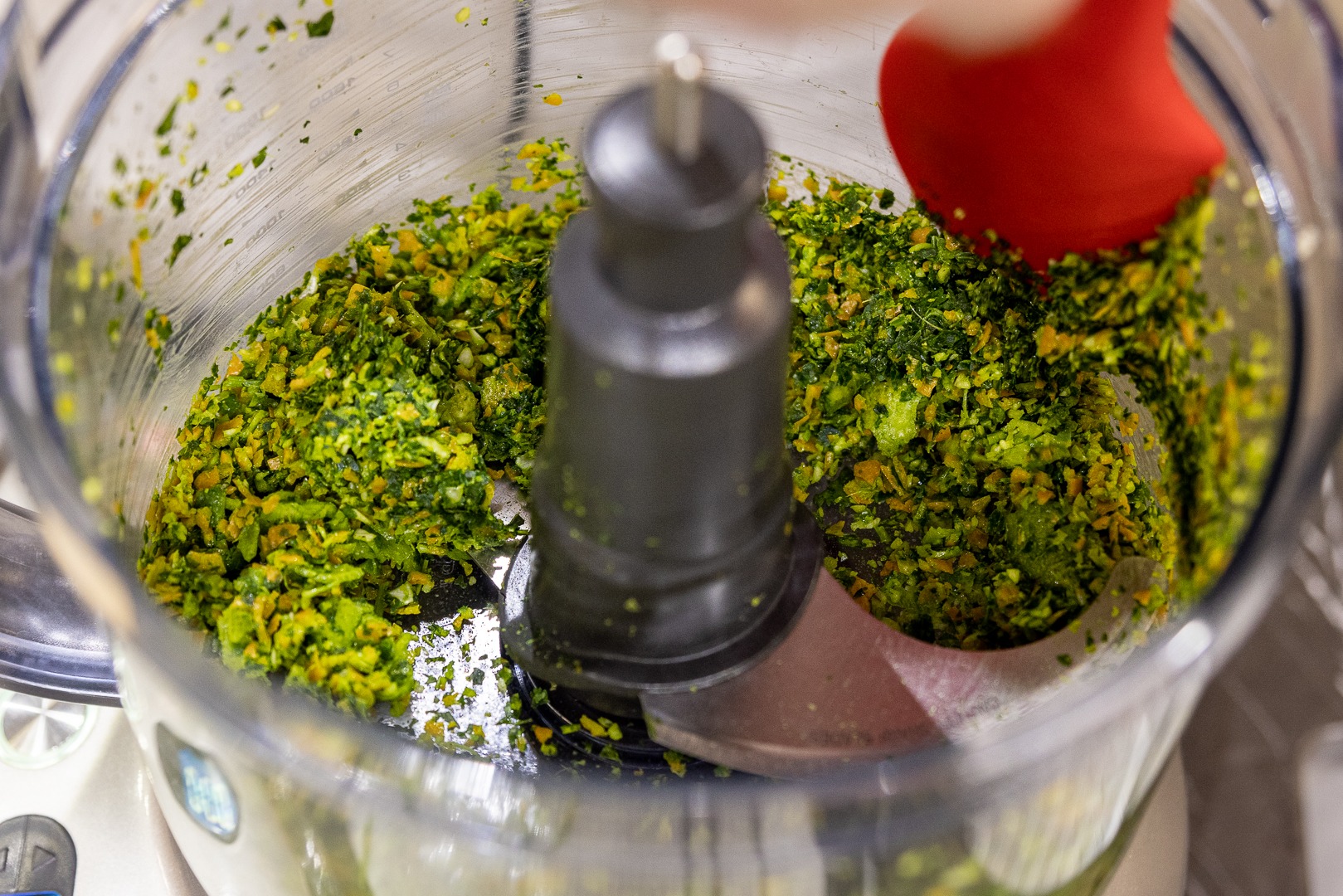
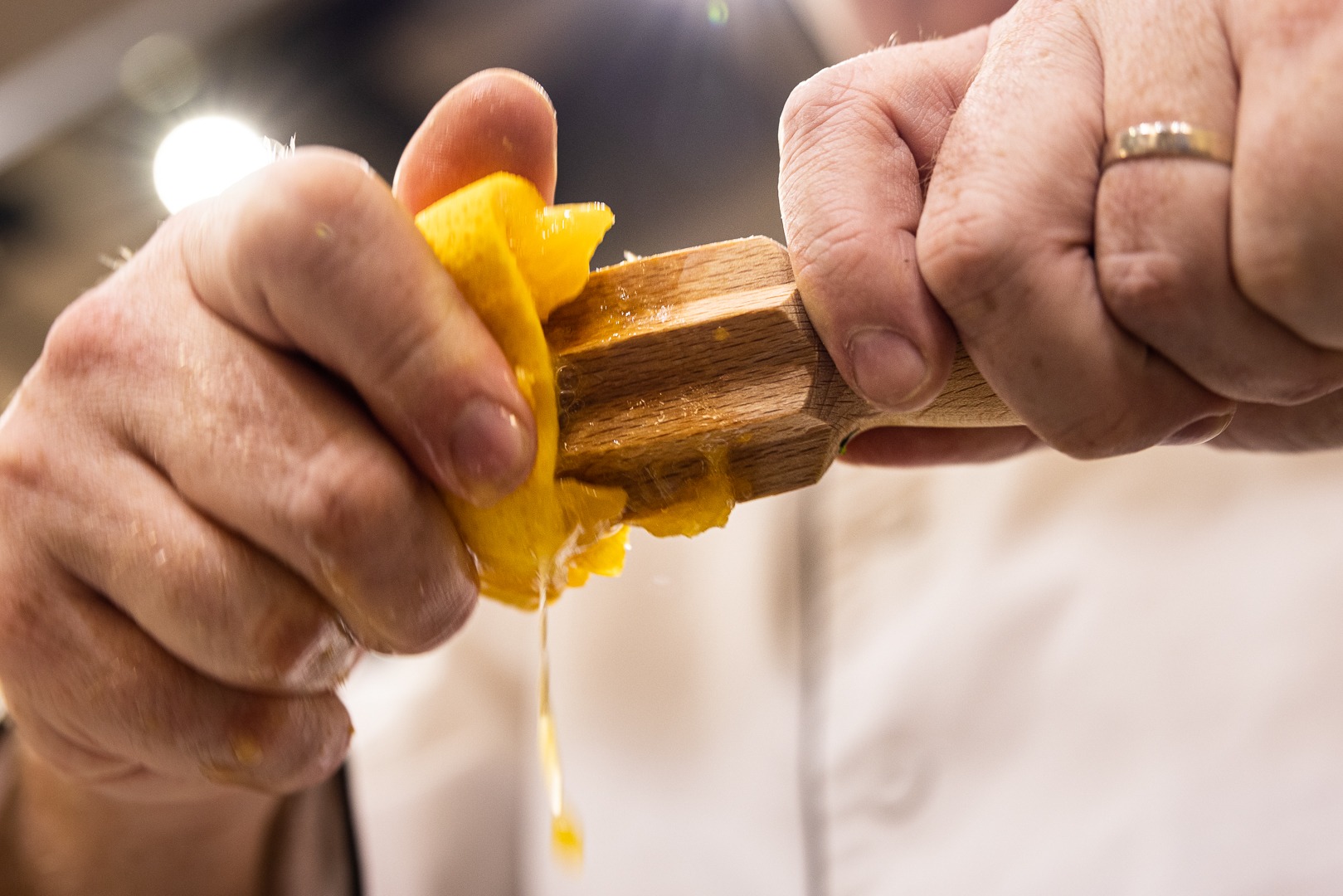
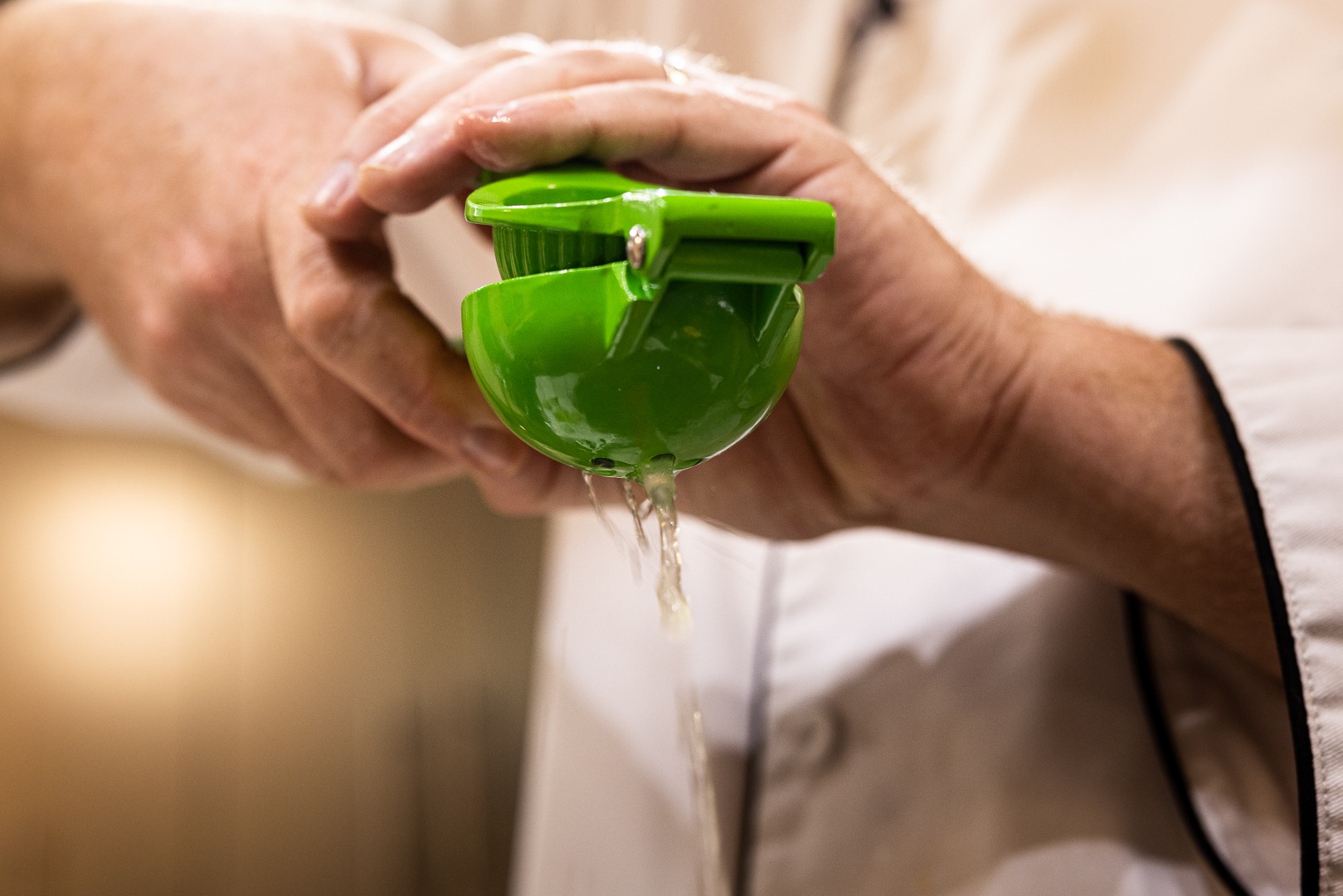
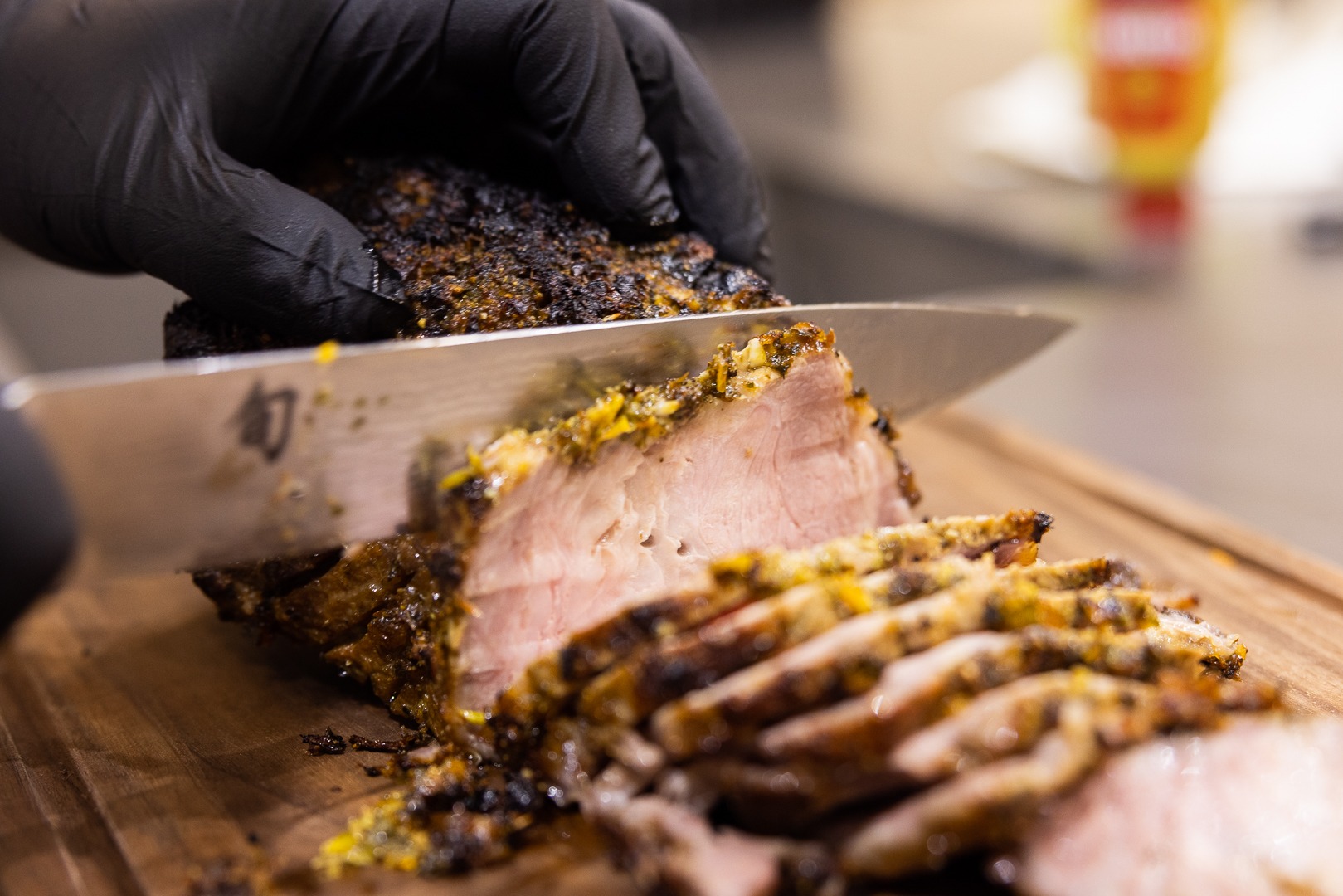
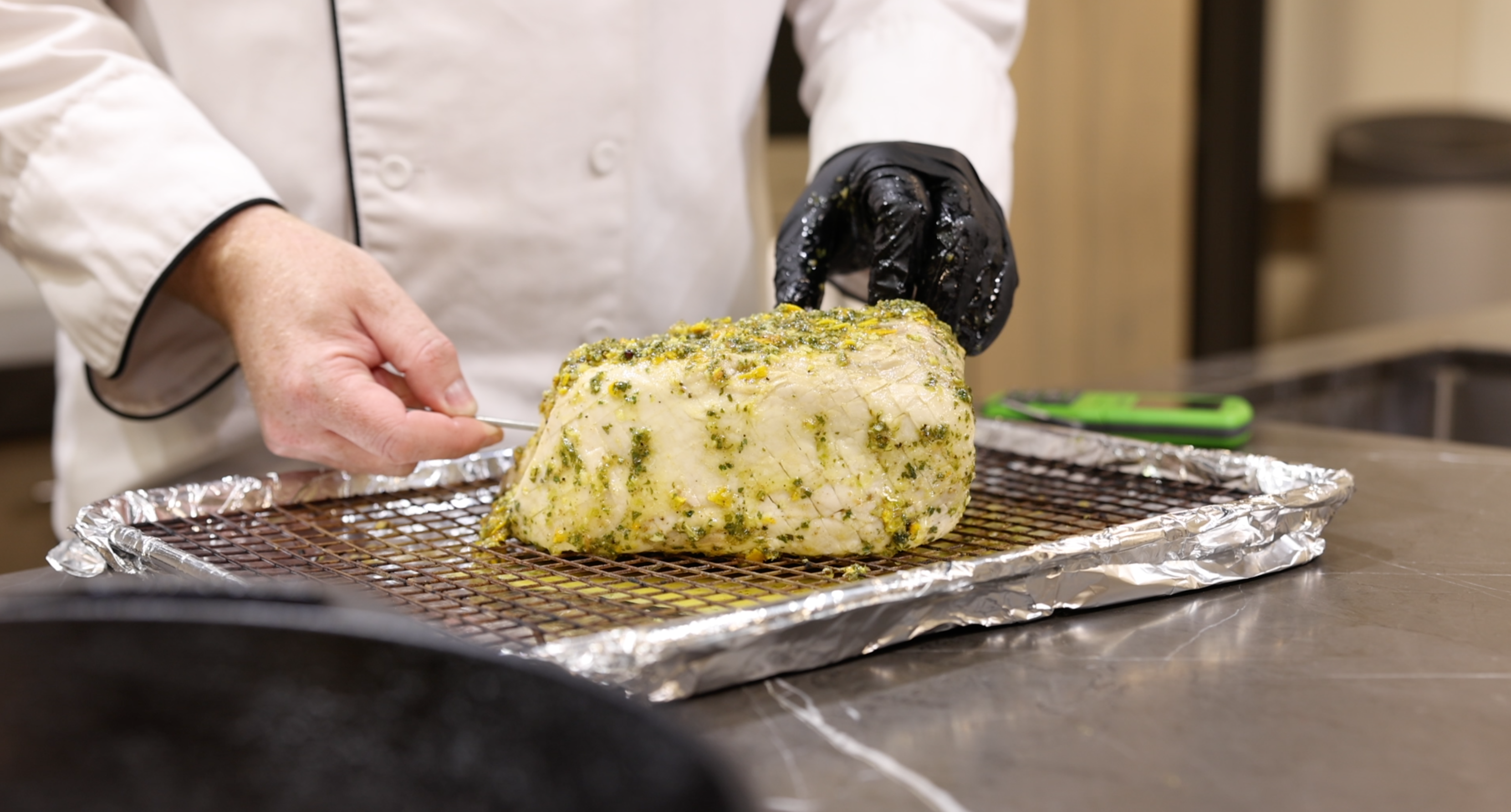

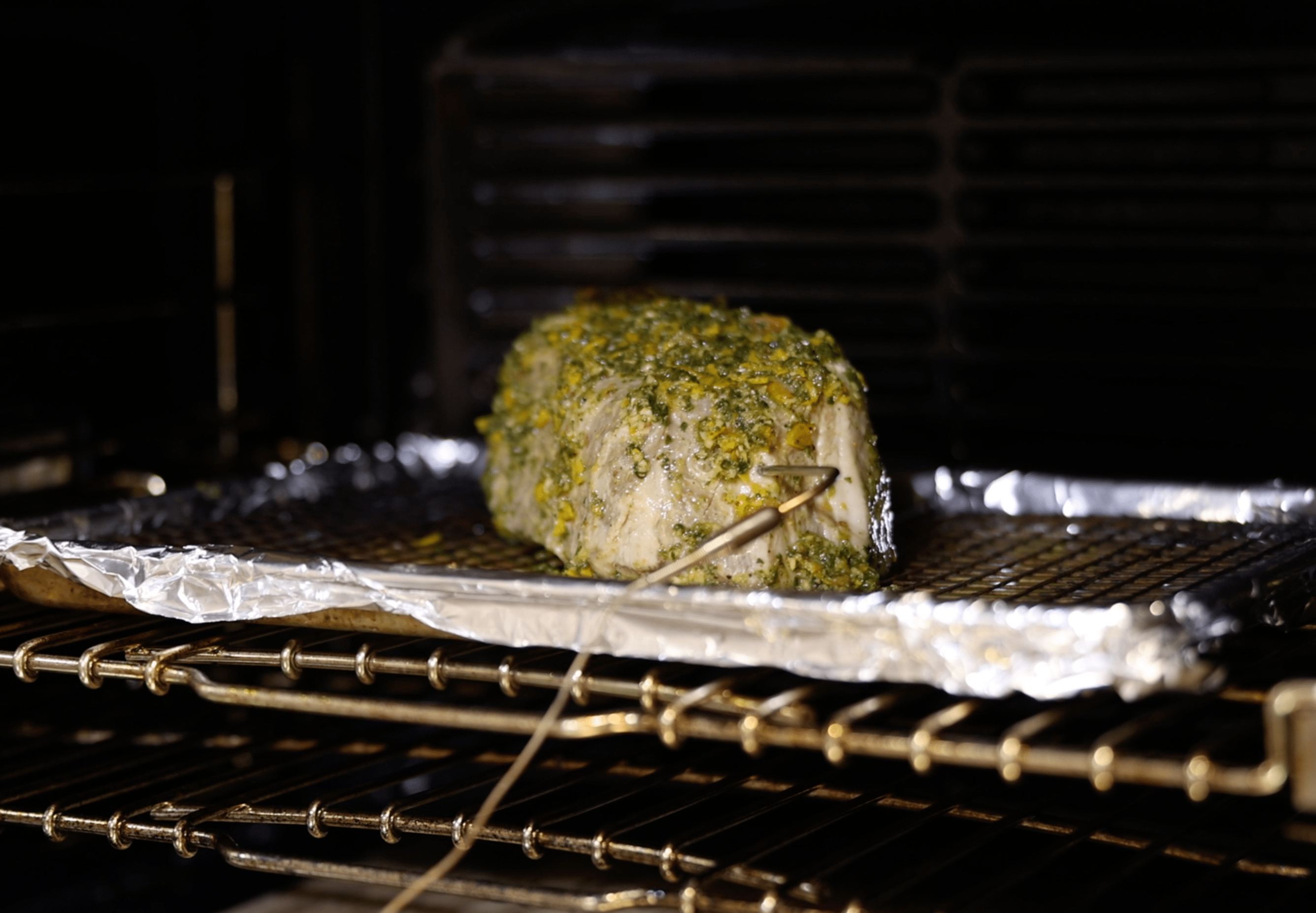
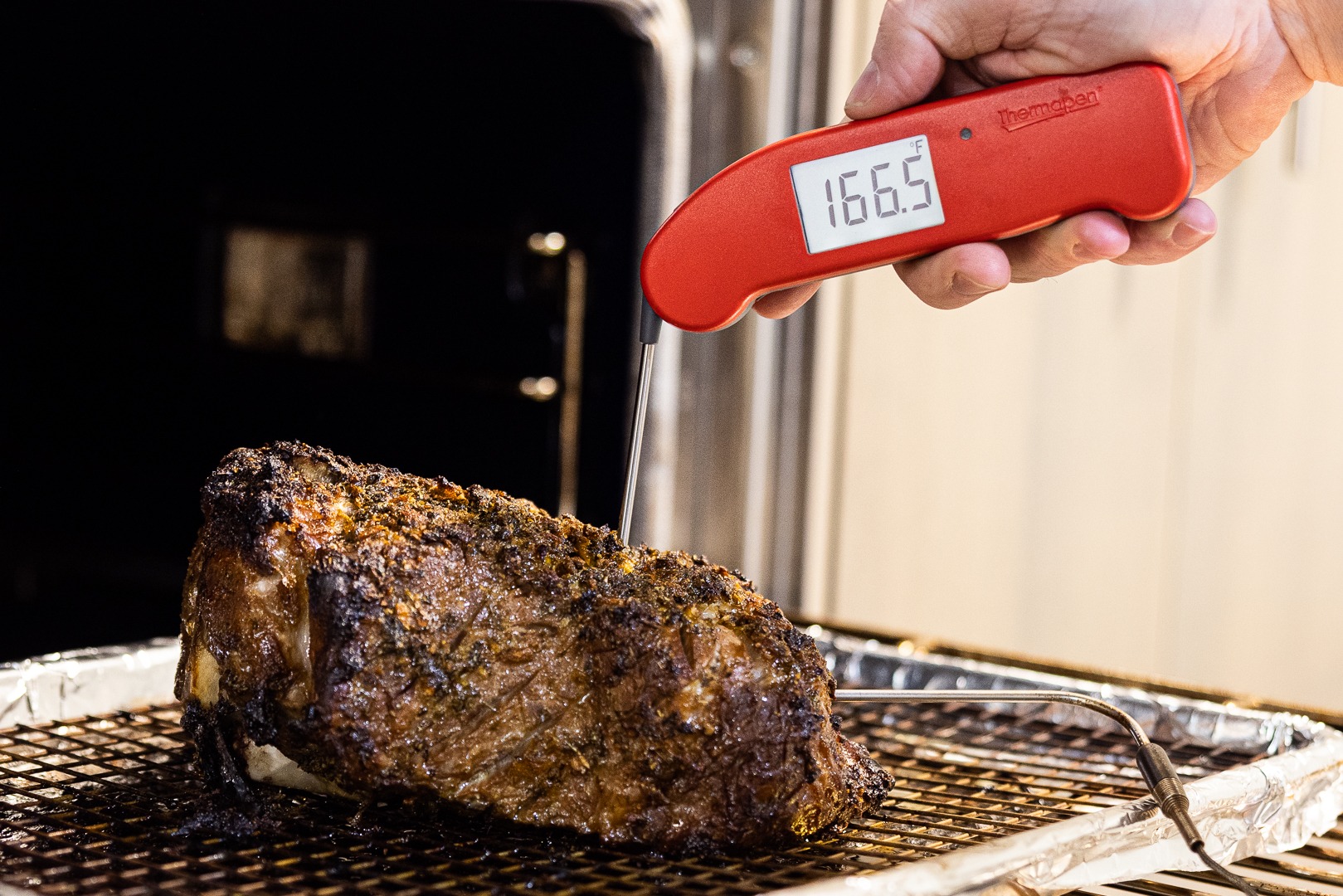
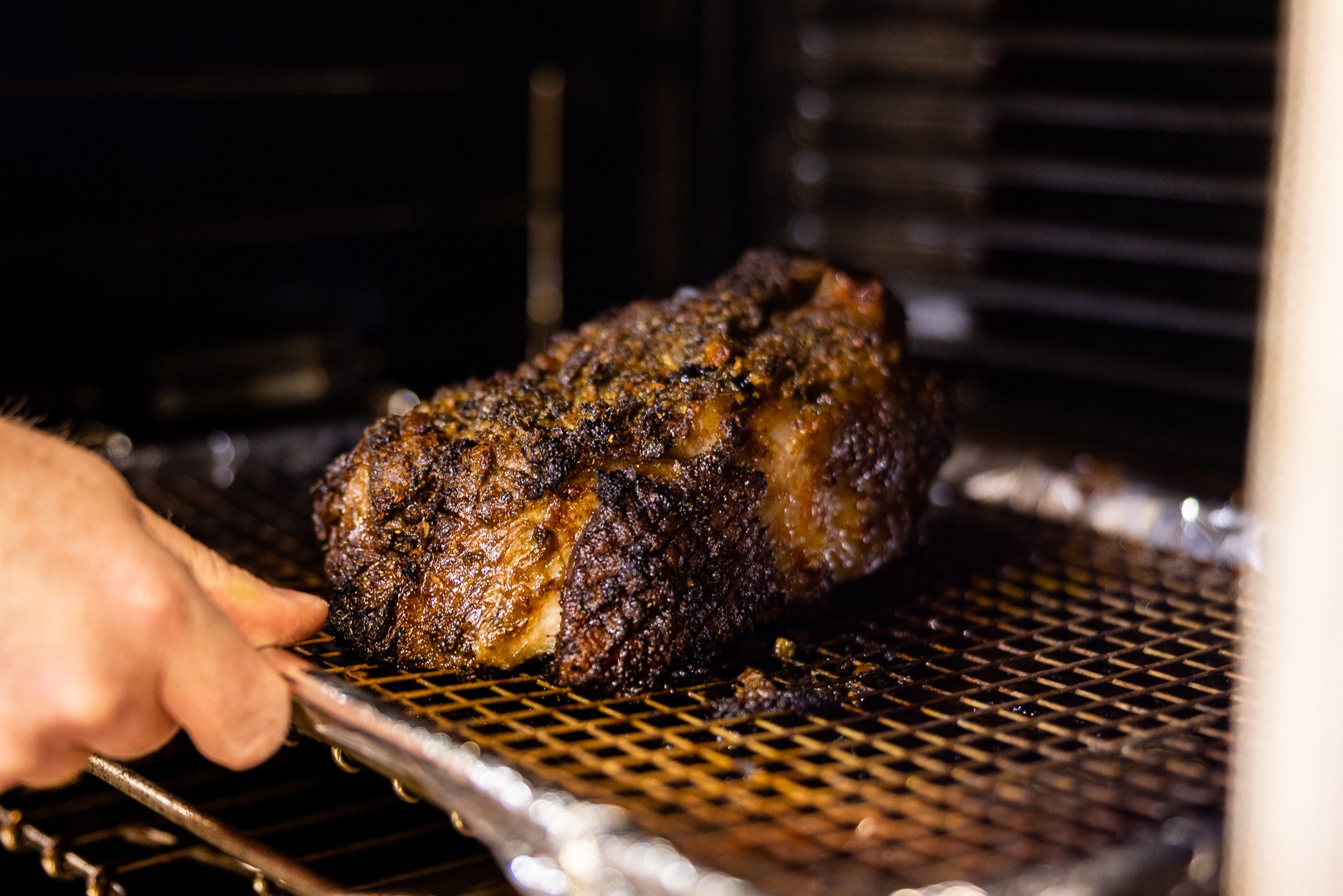
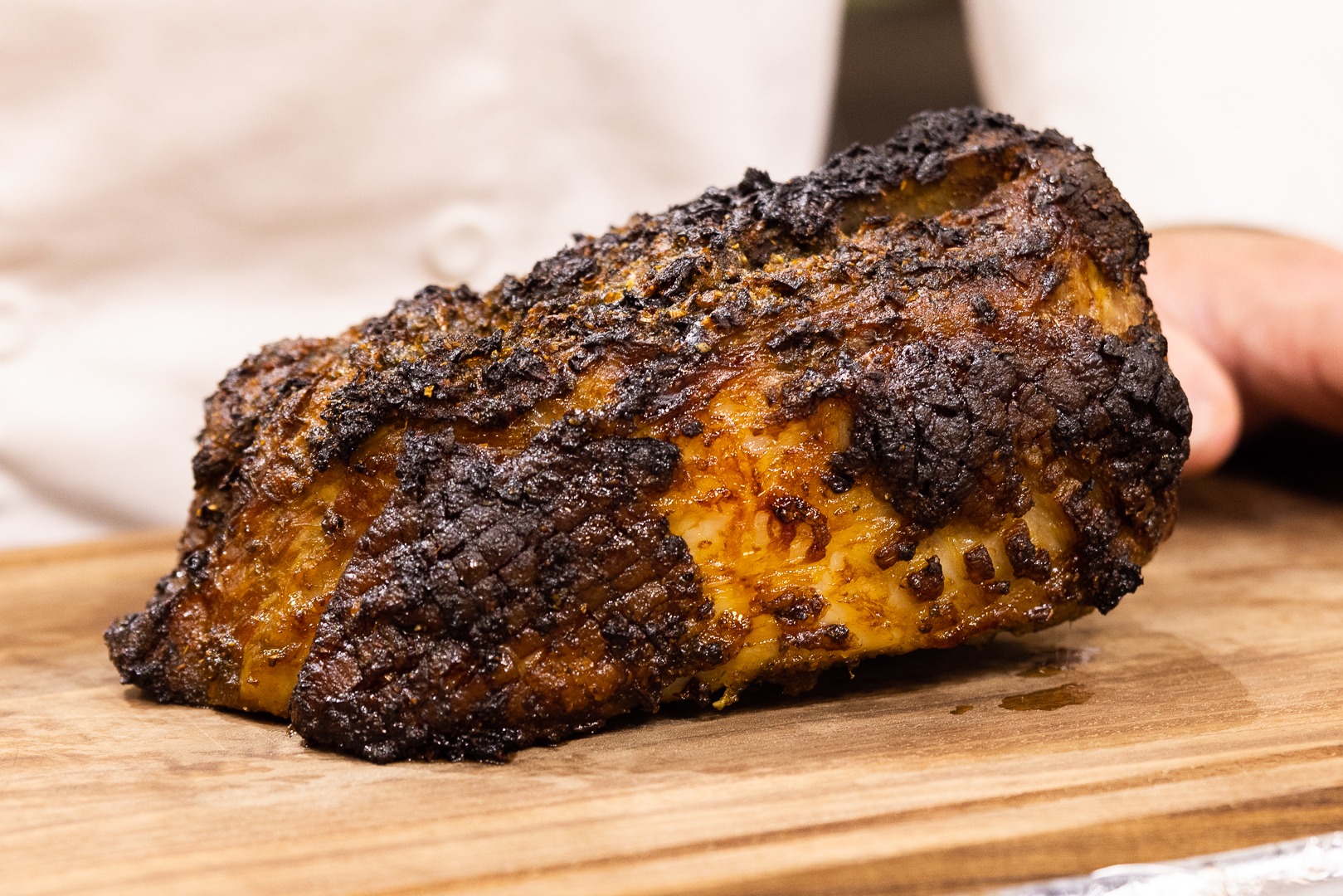
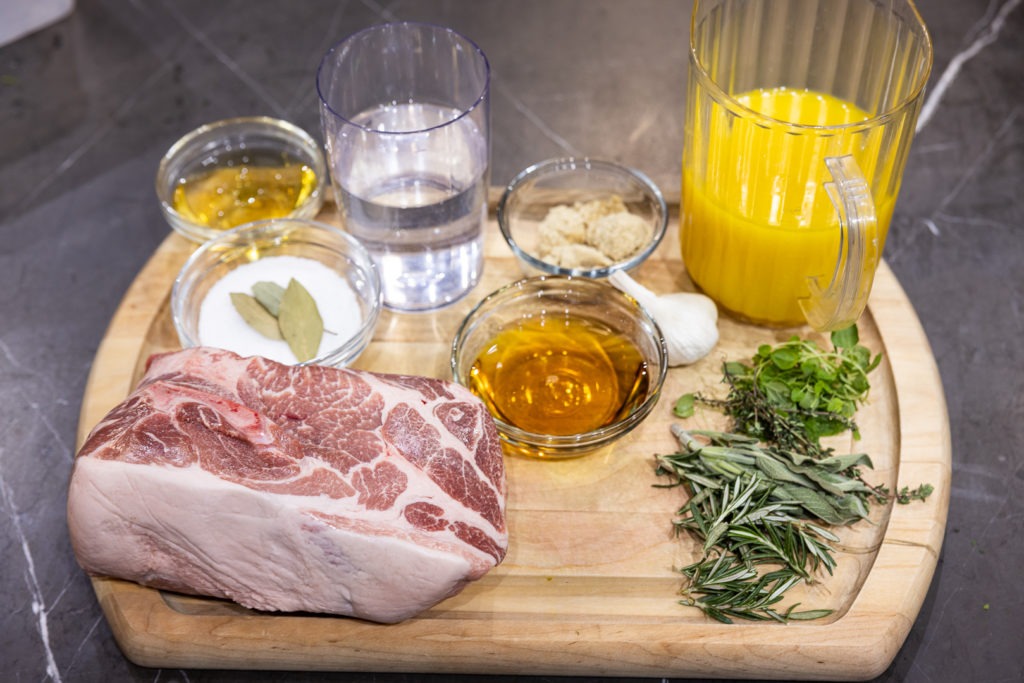
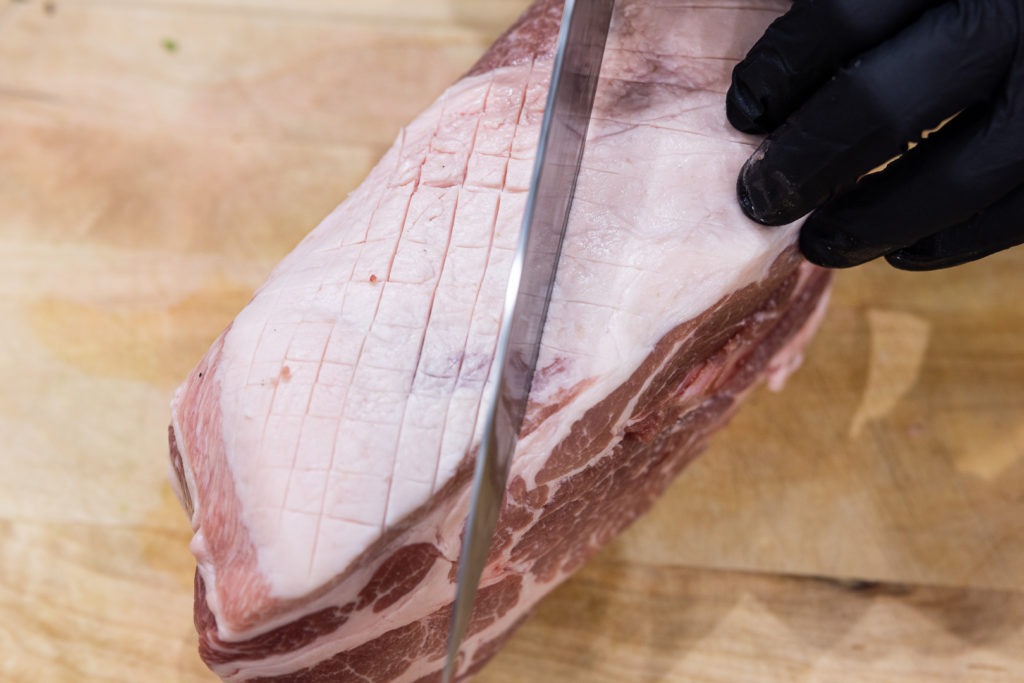
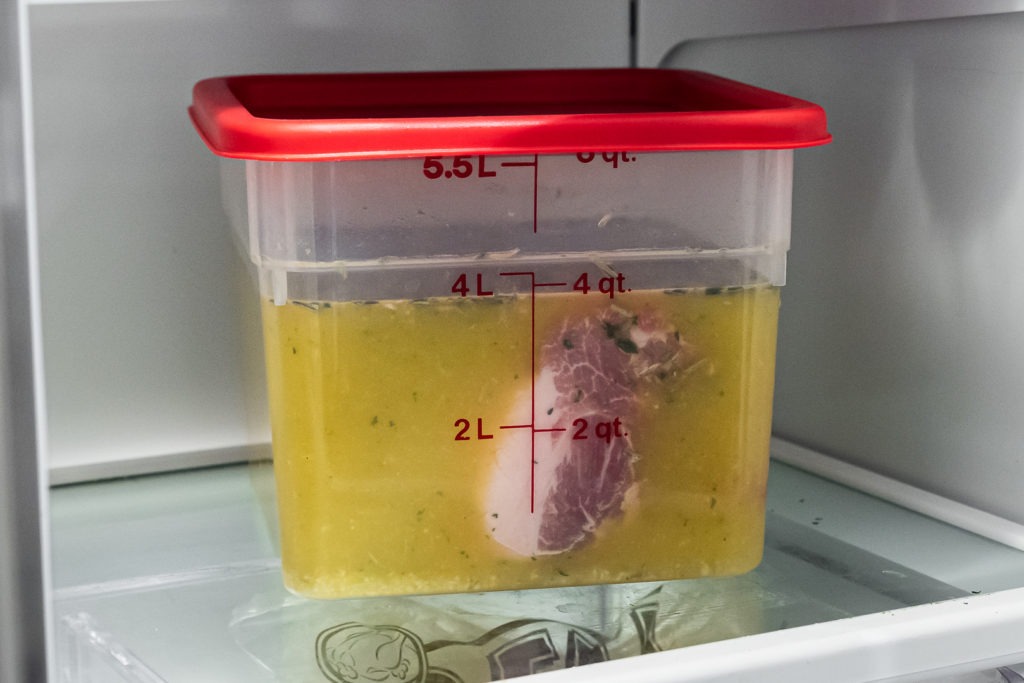
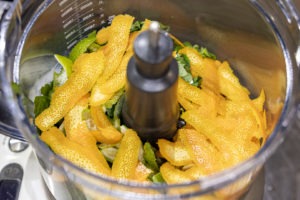
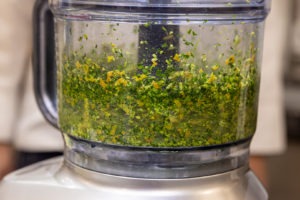
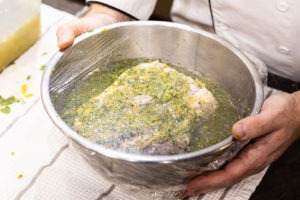
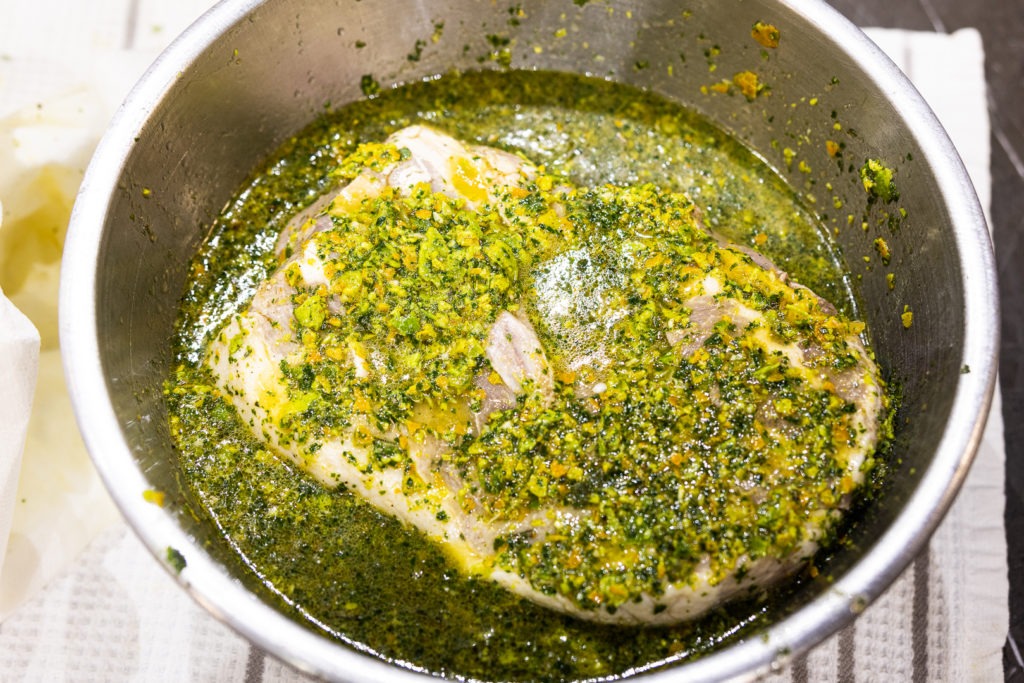
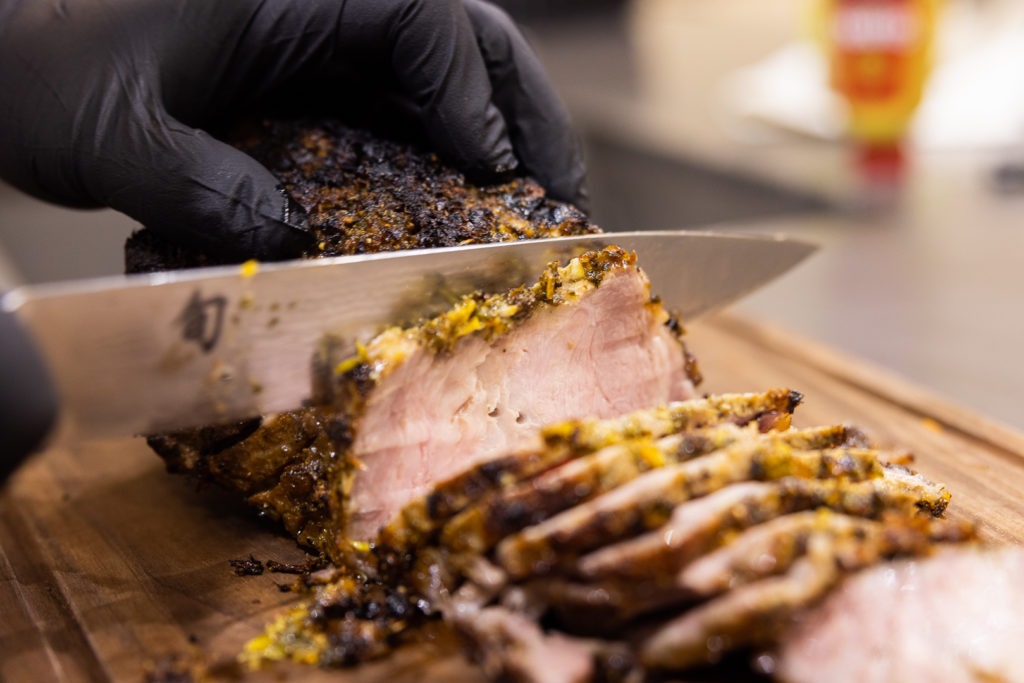
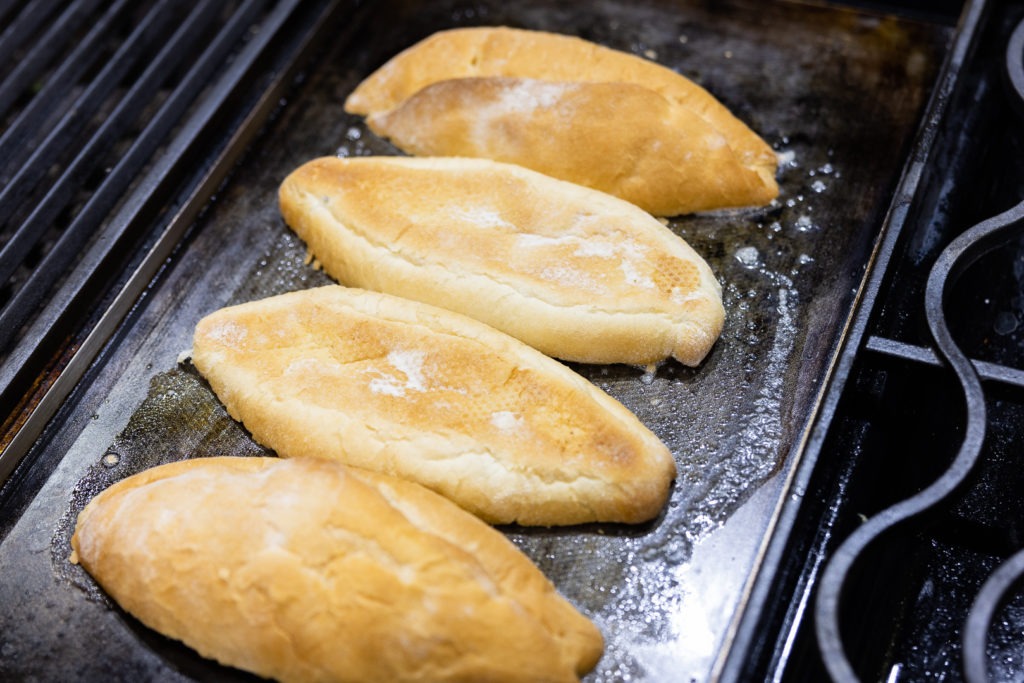


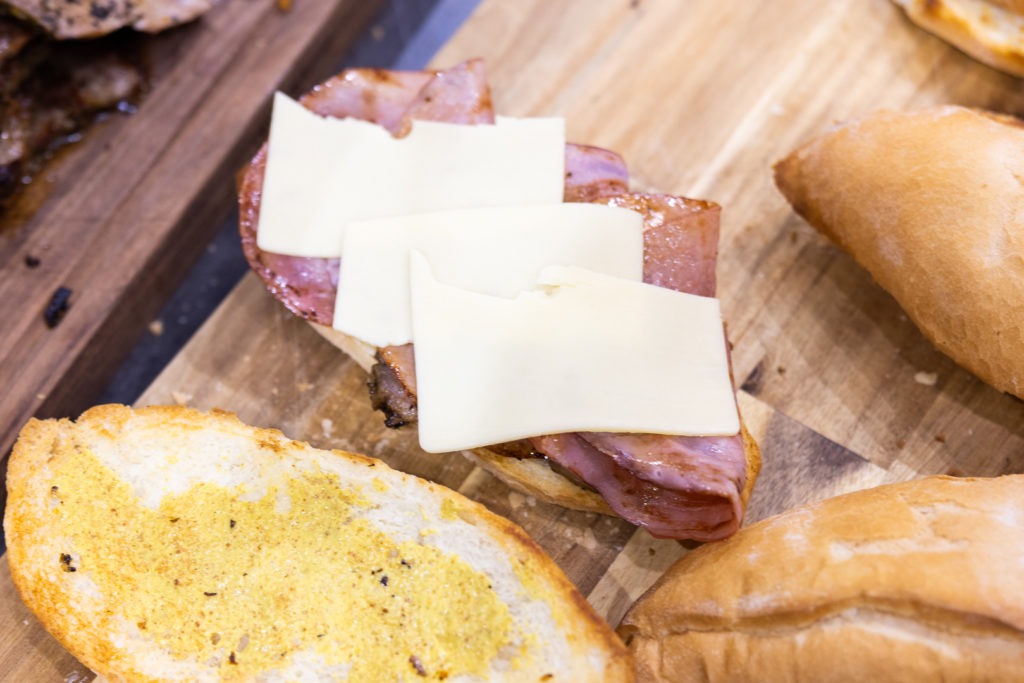
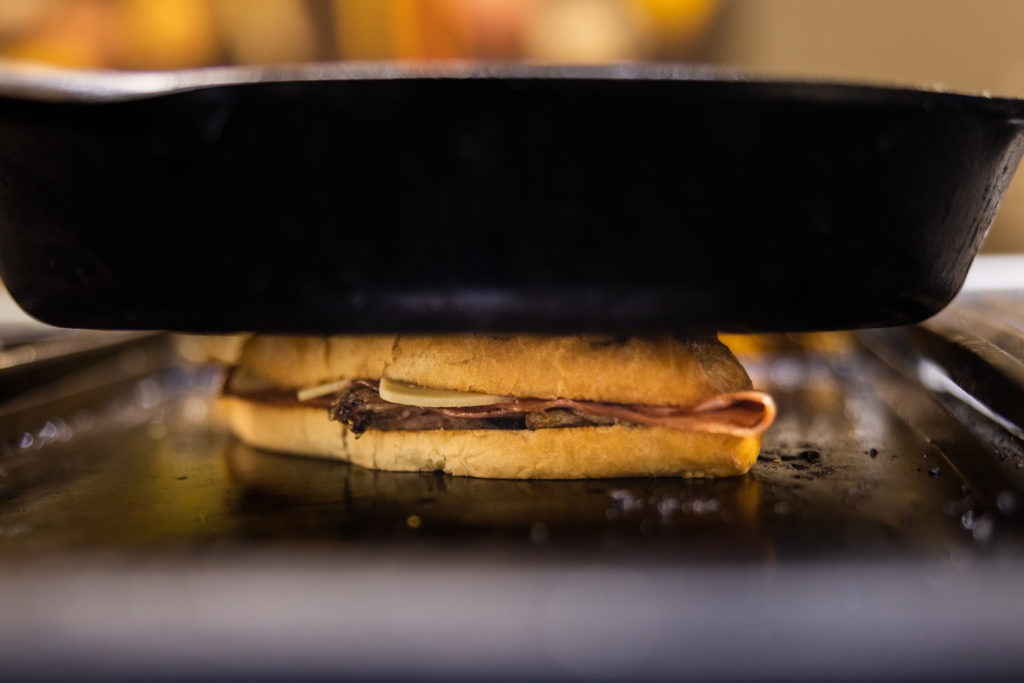
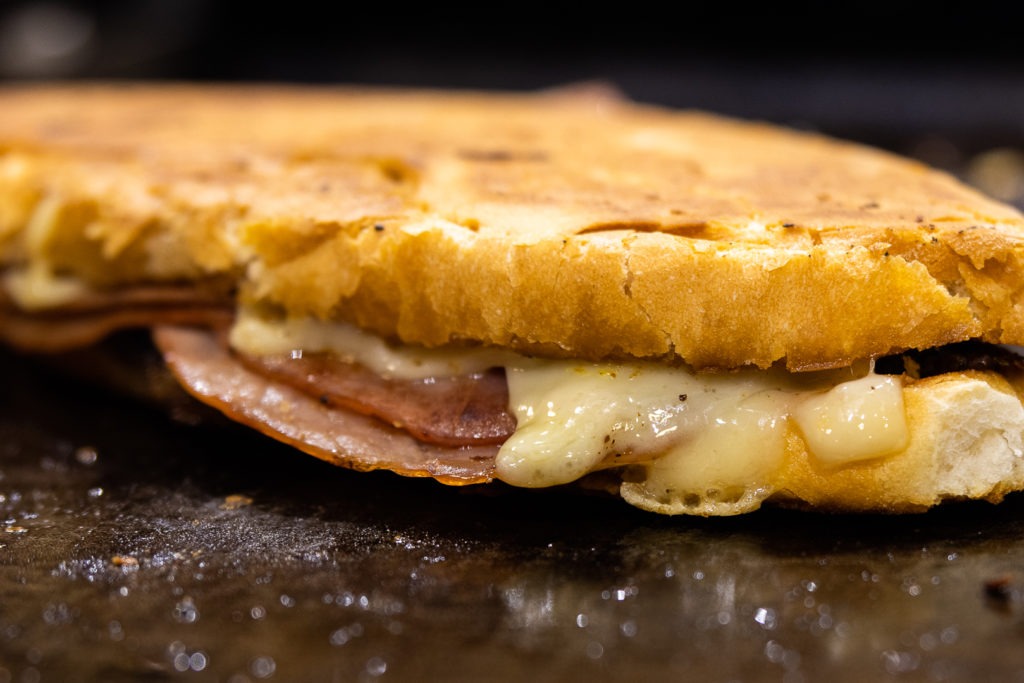


Love this recipe! We were in Cuba in February and I was unpleasantly surprised by what we were told was a traditional Cubano. The bun was so crisp and crusty it fell away into crumbs upon each bite. The filling was also not what I had expected but then I thought perhaps I had faulty knowledge of exactly what a Cuban sandwich contains.
We enjoyed Cuba very much. Friendly, vibrant and resilient people and much to see and do.
Sandra,
If you try this out, let us know how it worked out for you!
And I agree. Cuban culture is rich, dynamic, and so full of life.
Thank you!
-Kim
To my knowledge, Cuban sandwiches were created in Tampa Florida by Cuban immigrant cigar makers at the time. History details they were not actually invented in Cuba, and some lore says they were started in Miami, Fl. Sounds like the bread was too dry!
I love Cuban sandwiches. I was spoiled living in Miami 96′ – 98′ with authentic Cuban sandwiches being offered at every turn. It’s been hard to find them since moving to Utah. Looking foward to trying this recipe.
How long does the pork take in the oven?
Mike,
It will take about 4-5 hours to roast the pork shoulder.
Thanks!
-Kim
I can’t tell you how perfect this recipe sounds. I grew up in the Tampa Bay Area (25+ years) and am always searching for the “pressed Cuban” of my youth. I think you have nailed it. The most important reason to use Cuban bread is the crusty, flakey texture. It’s the perfect complement to the warm, gooey inside. I’m definitely going to try this!
Let us know how it goes!
How many pounds is the pork shoulder? Please give both bone-in and boneless.
It kind of doesn’t matter. We used a bone-in that was about 3 pounds, but as long as you can cover it in brine and marinade, the size isn’t important. You could use a 6-pound shoulder if you had one. But to get flavor penetration, I’d definitely butterfly or subdivide something that large.
Cook a piece that is big enough for the number of sandwiches you want!
We were stationed in Guantanamo Bay, Cuba. The Cuban sandwiches there made by Cubans just melted in your mouth. The best we ever had.
Also Jamaicans made Jamaican patties, that were sooo good.
Thank you for the Cuban sandwich recipe. It sounds real good, I will try it.
It would be nice to know how many this will serve and what size pork loin to use.
You can use any pork shoulder from 2 pounds on up, and you’ll get correspondingly more sandwiches. With the 3-pound bone-in sone we used, we had about 5-6 sandwiches worth of pork.
I made cuban bread to go along with your pork recipe. It turned out amazing. Thank you for a great sandwich.
This looks really good. I love pork.
Regarding the marinade–
I’m striving to be very low-carb. No sugar for 6 years. I would like to substitute some ingredients in this recipe and still get similar results. For example, the brown sugar could easily be replaced by brown erythritol. I am concerned about the orange juice. I have thought about something like sweetened (sugar-free) lemon juice with some orange oil or extract added for flavor, watering it down if too acidic. Any suggestions?
Rum? I don’t know about the carb content of rum, as I have never had it in the house. Is the alcohol important? or is it just the flavor? If it’s flavor, I can just add rum extract. What do you think? Try it? Or move on to a different recipe?
The most important part of the marinade is the salt and the acid. Those substitutions sound fine, but I don’t have any experience with them, so I can’t say 100%. Rum has no carbs, so go for it. Remember that this is just a marinade, too. The orange juice may have a little sugar, but compared to the mass of the meat, it’s only going cling to the outside a tiny amount. The amount of sugar getting in the meat will be almost negligible.
I made this recipe for my Florida native in-laws after they’ve lived in Utah for two years. They brought back real Cuban bread from a trip they took in Florida. They all agreed that they were real Cubano Sandwiches (and the best they’ve ever had)! As they were from Tampa, we added Genoa-style salami. 10/10 would recommend and 100% worth the time.
Fantastic!